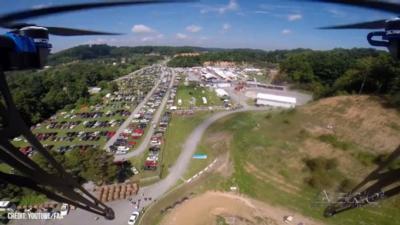A Word About "Pre-Designated Emergency Landing Areas"
In January of 2023 the Federal Aviation Administration published their latest revision to their Heliport Design Advisory Circular, AC 150/5390-2D.

First introduced in 1959, this standard is the only recognized guidance document for heliport design in the United States. While the FAA goes out of its way on page one of their advisory circular to point out the fact that this document is not regulatory in nature, at least not from a federal level, and that the guidance it contains is purely a recommendation, the fact is many other federal, state and local agencies point to this advisory circular in reference, which in many cases makes these recommendations regulatory.
While the new advisory circular contains a number of formant changes, updates, and additions, one change, while very subtle, could be of significant importance to the aviation community as a whole. That being the introduction of the term Pre-Designated Emergency Landing Areas or “PELA” for short. The FAA Heliport Design AC defines a PELA in the following way:
“Pre-designated emergency landing areas (PELAs) are clear and level areas near the scene of an accident or incident that the local emergency response team designates as the place where the helicopter air ambulance is directed to land to transport an injured person to a hospital. Provide such sites in various locations within a jurisdiction to support fast response to medical emergencies and accidents. Pre-designating these areas provides the opportunity to inspect potential sites in advance and to select sites that have adequate clear approach/departure airspace and adequate clear ground space. See the Aeronautical Information Manual (AIM), Chapter 10, for guidance on setting up offsite scenes or PELA landing sites.”
While the FAA did just define and publish this term in January, it is important to point out that PELAS have been around for quite a while. In fact, for nearly 40 years. In the mid 80’s a project was undertaken in North Dakota to institute a PELA system throughout that state. Since then, EMS organizations in Oklahoma, Tennessee, Maine, and several other states, have formally or informally adopted a PELA program to enhance safety and augment Helicopter Air Ambulance (HAA) and First Responder operations. To date there are an estimated 10,000 plus PELAs in existence in the U.S. and growing every day.
That said, neither the FAA nor any state D.O.T. tracks, monitors, or conducts oversight of these special use landing areas. As such, not one flight planning program, GPS database, or websites, which pulls its information from the FAA airport master record database accounts for PELAs. Only one organization, LZControl, has been dedicated to tracking and cataloging all HAA landing sites to include airports, heliports, helistops, and PELAs throughout the world. Started as a grassroots organization of volunteers several years ago, with a goal of capturing and tracking specialized hospital heliport data using crowd-sourcing techniques to improve data accuracy and enhance patient safety, LZControl is the only organization that currently tracks these highly specialized landing areas.

While those in the general aviation community will more than likely never land or takeoff from a PELA, having knowledge of where these sites are located will prove to be highly beneficial from a flight planning and safety perspective. The importance of this may be most evident in the UAS and drone market for operators who intend to conduct “Beyond Visual Line Off Site” (BVLOS) operations in the future. There is in fact a tremendous amount of aviation that takes place below 500 feet AGL that the Automatic Dependent Surveillance–Broadcast (ADS-B) system does not accurately depict or account for.
Another potential use for PELAs in the very near future may be in the Advanced Air Mobility (AAM) market. A PELA system in an urban, suburban, or even rural environment could potentially provide known clear areas for Vertical Takeoff and Landing (VTOL) aircraft to safely recover during an emergency. This could be especially useful when these aircraft are being operated in areas classified as “Hostile” or “Congested” environments as defined by International Civil Aviation Organization (ICAO).
 OSH25 Day Four Redux: Spirit SE-1!, H55 eFlyer, King Schools
OSH25 Day Four Redux: Spirit SE-1!, H55 eFlyer, King Schools ANN Thanks Our Speedy Sponsor... Blackshape!!!
ANN Thanks Our Speedy Sponsor... Blackshape!!! Alpha Systems AOA Guides ANN Oshkosh Coverage
Alpha Systems AOA Guides ANN Oshkosh Coverage Pilot Mall Intro's High Flying Models To ANN Sponsor Lineup
Pilot Mall Intro's High Flying Models To ANN Sponsor Lineup CiES Fuels ANN's Oshkosh 2025 Special Event Coverage
CiES Fuels ANN's Oshkosh 2025 Special Event Coverage




